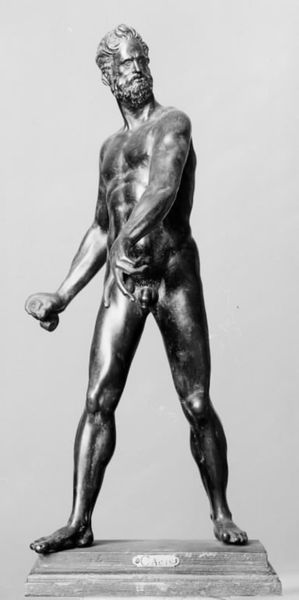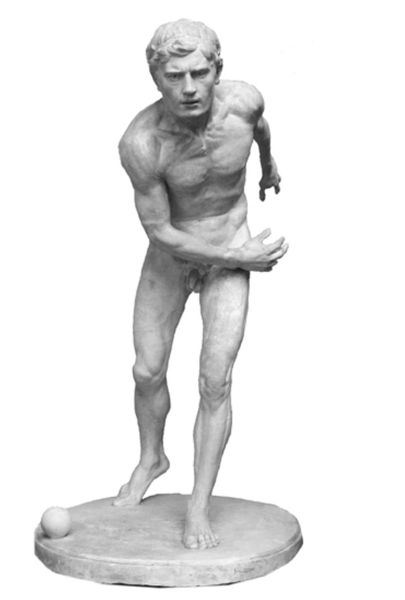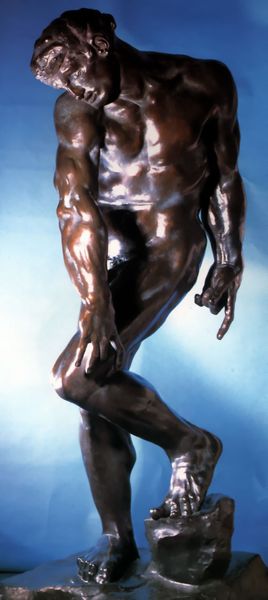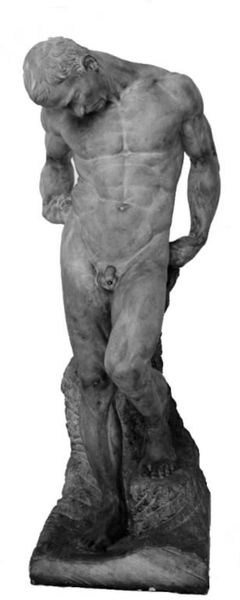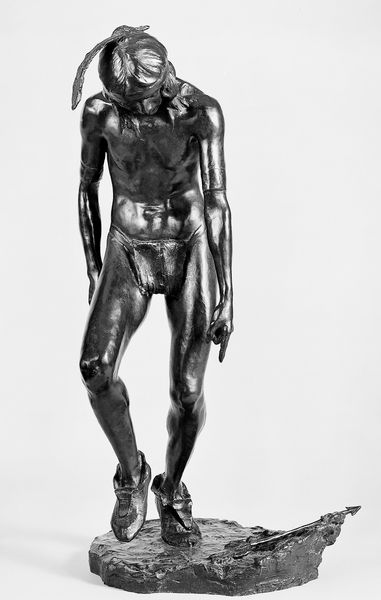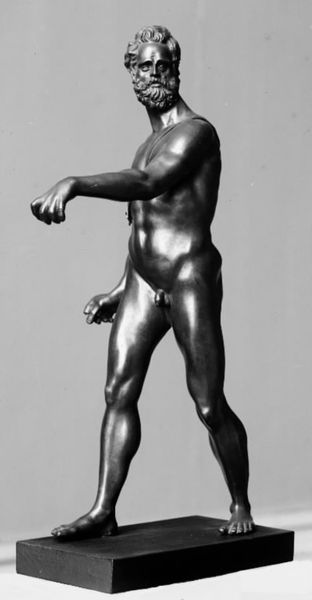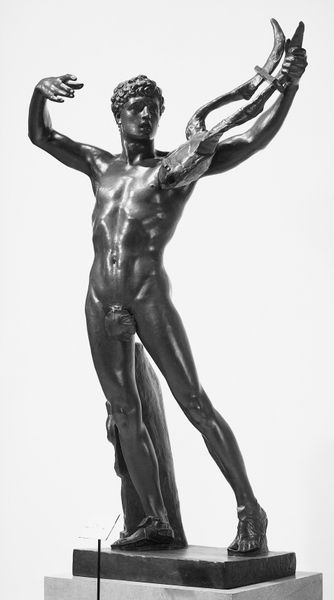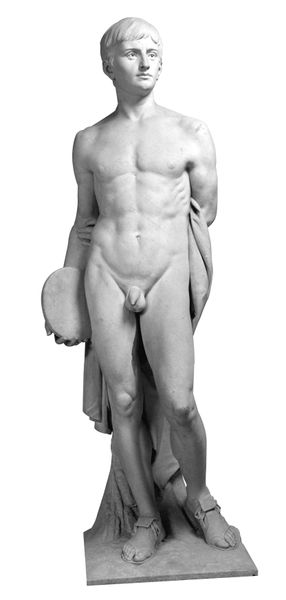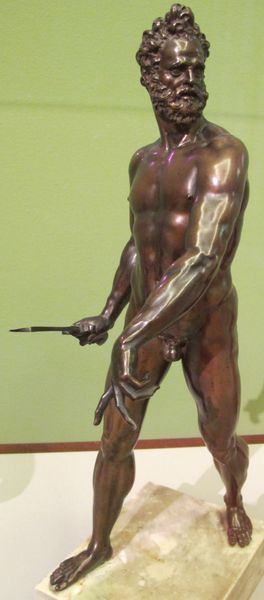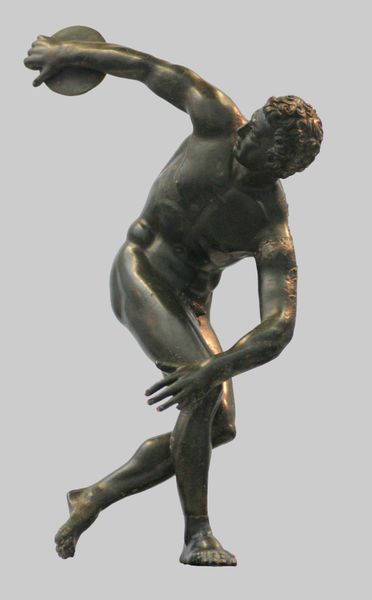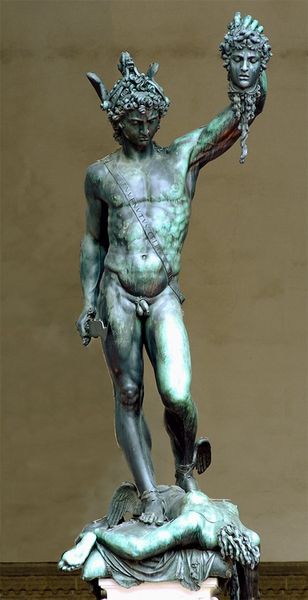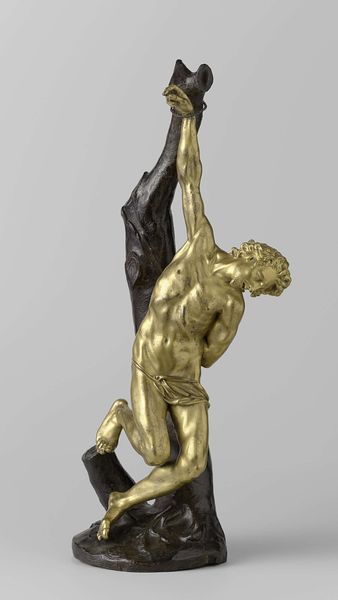
Filoktet. Stående med den sårede fod strakt frem og hovedet kastet tilbage i smerte 1854 - 1855
0:00
0:00
bronze, sculpture
#
neoclassicism
#
greek-and-roman-art
#
bronze
#
figuration
#
sculpture
#
nude
Dimensions: 194 cm (height) x 102 cm (width) x 62 cm (depth) (Netto)
Editor: Here we have H.W. Bissen’s bronze sculpture "Filoktet. Standing with his wounded foot stretched forward and his head thrown back in pain," created between 1854 and 1855. The pose immediately strikes me – such intense physical suffering captured in the human form. What complexities do you observe within this piece? Curator: Beyond the immediate visual of pain, I see a powerful interrogation of masculinity and vulnerability. Bissen situates Philoctetes, a Greek hero, in a moment of profound suffering, challenging the stoic ideal often associated with classical heroism. Consider how the body, traditionally celebrated for its strength, is here presented as a site of pain and alienation. Does this not remind us of the often silenced or invisibilized struggles within marginalized communities? Editor: I hadn't considered that connection. The suffering depicted is so individualized. Are you suggesting Bissen might be commenting on broader social experiences of pain or disempowerment? Curator: Precisely. The wound, both literal and metaphorical, can be seen as representative of systemic injuries inflicted upon those deemed "other." It invites a critical examination of who is allowed to express pain, whose suffering is validated, and whose is ignored. Furthermore, think about the inherent tension: a nude, seemingly idealized figure, yet ravaged by injury. How does this interplay with contemporary discussions about body image and societal expectations? Editor: That's such a layered way to interpret it. I was so focused on the mythological context, I overlooked the contemporary parallels. It encourages you to reflect on suffering today. Curator: And doesn’t that shift our perception? Suddenly, it’s not just a relic from the past, but a mirror reflecting current power dynamics and societal biases. It forces us to ask: Whose stories are being told, and whose are being suppressed? Editor: This has really transformed my initial reading. It’s incredible how one sculpture can speak to both ancient myths and present-day realities. Thanks for opening my eyes. Curator: Absolutely! It is about using art to create a bridge for understanding shared, yet differentiated, human experience.
Comments
No comments
Be the first to comment and join the conversation on the ultimate creative platform.
